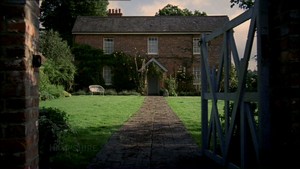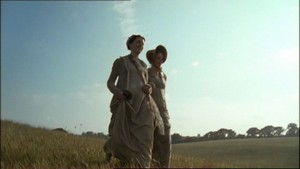Proposal for a talk to be given in a break-out session at JASNA, Brooklyn, NYC 2011

The purpose of my talk is to demonstrate that Jane Austen's letters are a crucially valuable context for her fiction. She displays in her letters a startling frankness about women's bodies, her lack of power and liberty, and her straitened circumstances. Her treatment of these topics is replicated in her discreet fictions for publication in which marriage is an ambivalent refuge, travel poses threats to women's identity and pride, and the level of lifestyle for some unmarried heroines is closer to The Watsons than many of the film adaptations suggest.
I will begin where the letters have dismayed and shocked readers: the abrasive witticisms on women in parturition and pregnancy (e..g., LeFaye 17). I will contextualize these with the wide array of such comments in the letters to reveal Austen's intense identification with other women (53, “the poor girl,” 100-101, Mrs Buller), including servants (79), her continual awareness of the suffering and risk of death: “Mrs Coulthard and Anne, late of Manydown, are both dead. We have not yet regaled Mary [Lloyd Austen, just then in an advanced stage of pregnancy] with this news” (20). I will read her jokes on hardships of all sorts seriously, listen to her voice an immense strain when ejected from Steventon and cannot choose where or with whom she shall live, has to watch precious objects sold (84), to her complaints when she cannot plan needed travel (e.g., 11-12), and heed her passages of pathos considering her nieces' complicity with limited choices of life (329, 332-33 to Fanny Austen Knight) and deterioration: “Anna has not a chance of escape; her husband called here the other day, & said she was pretty well but not equal to "so long a walk; she must come in her ",Donkey Carriage."--Poor Animal, she will be worn out before she is thirty.---I am very sorry for her” (336). My audience will see Austen consciously as a woman shop for bargains in food (82) and clothing (42), worrying about the wash and housekeeping; hear her ironic deflections of proposed husbands; we witness her hurt when she is needled over the low price her books fetch (88) and represses a continual need to communicate through writing (LeFaye 21, 25; Harman 61-65).
Then we will look at what she called pleasure and defined as her success. In contrast (once again) to the anorexia of film heroines (Wooden), she is comfortable with her body size, open about loving to eat and drink from youth to middle age: “Caroline, Anna and I just been devouring some cold Souse, & it would difficult to say which enjoyed it most;” “I am put on the Sofa near the Fire & can drink as much wine as I like” (4, 251), indulges in sensual solitary idleness (11, 55, 121, 210). She hands over most of the housekeeping to Cassandra (Caroline Austen 171), wishes clothes came ready made, presents herself as a “desperate walker” (64), dancer (53), passionate reader and writer (27), lover of landscapes in almost any state, solitary (in the “hard black Frosts of last week”), with others, ignoring all discouragement (26, 36), contemplating the very occasional splendid garment (52). She refuses to indulge in cant, false sentimental familial hypocrisies however insistent the demands (54). She sought and achieved an alternative vision of life for herself, Cassandra, and Martha Lloyd (105) and published four of her novels, had two more and several fragments in store for development. She was forced to begin late, but she did begin.
I will then focus on Austen's marginalized, secondary, non-exemplary and gothicized heroines. Charlotte Lucas's story will become that of a woman who did not want to marry, and whom economic necessity and position (her brothers' “fears” over her) led her to give up the one meaningful relationship of her life (with Elizabeth Bennet); I will extend Wiltshire's analysis of Marianne Dashwood, to include the two Elizas, Maria Bertram, Mary Crawford, and Harriet Smith as all variations on complicit sacrifices underpinning the stability of their social order. Lucy Steele, Jane Fairfax and Isabella Thorpe will be seen as (in Emma's words) women living in a world that is “not theirs, nor the world's law” (E 400). My perspective links the bleak bitter realism of the Watson sisters' preying on one another to the abjection of Eleanor and Mrs Tilney. By texts' end these characters survive or not by a judgment on how they answered responded to the contradictory codes of their worlds. Austen's texts in the light of her letters makes us see they lacked the education and liberty to choose.
I am not the first to praise the letters because they are about women's matters (Juhasz) and power relationships (Whealler, Kaplan). But previous attempts to use parallels between Austen's letters and fiction novels have floundered on the letters' supposed guardedness, studied coolness, and remnant nature (Flynn 101, 110). Auden's irony is intended to make us admit to the novels' revelation of “the amorous effect of brass” and “economic basis of society.” I will show the real obstacle to using the letters has been Austen's life-writing when applied to the fiction destroys favored myths about Austen and her novels.
Ellen Moody
George Mason University
- Austen, Caroline. My Aunt Jane. J. E. Austen-Leigh, A Memoir of Jane Austen and Other Family Recollections. Ed. Kathryn Sutherland. Oxford: OUP, 2002.
- Austen, Jane. Jane Austen’s Letters Ed. Deirdre Le Faye. 3rd ed. Oxford: OUP, 1995.
- __________. The Novels of Jane Austen. Ed. R. W. Chapman. 3rd ed. Oxford: OUP, 1933-6
- Flynn, Carol Houlihan. “The Letters.” The Cambridge Companion to Jane Austen. Edd. Edward Copeland and Juliet McMaster.. Cambridge UP, 1997. 100-14.
- Harman, Claire. Jane's Fame. Henry Holt & Co, 2010.
- Juhasz, Suzanne. “Bonnets and Balls: Reading Jane Austen's Letters.” The Centennial Review 31:1 (1987):84-104.
- Kaplan, Deborah. Jane Austen Among Women. John Hopkins UP, 1992. 89-103 especially.
- Wiltshire, John. Jane Austen and the Body. Cambridge UP, 1992.
- Whealler, Susan C. “Prose and Power in Two Letters by Jane Austen.” Sent as a Gift: Eight Correspondences from the Eighteenth Century. Ed. Alan T. McKenzie. Univ of Georgia Pr, 1993. 173-200.
- Wooden, Shannon. “You even forget yourself:” The cinematic construction of anorexic women in the 1990s Austen Films, “ Journal of Popular Culture 36:2 (2002):15 pgs.

Home
Contact Ellen Moody.
Pagemaster: Jim Moody.
Page Last Updated 9 September 2011